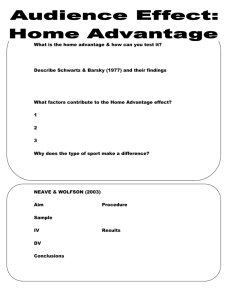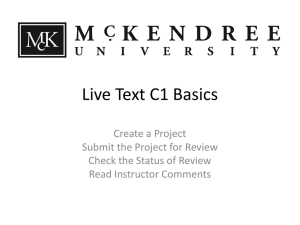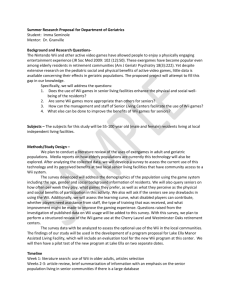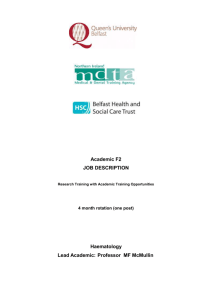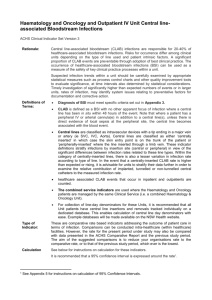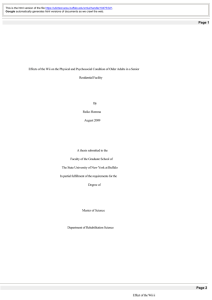Exercise-at
advertisement
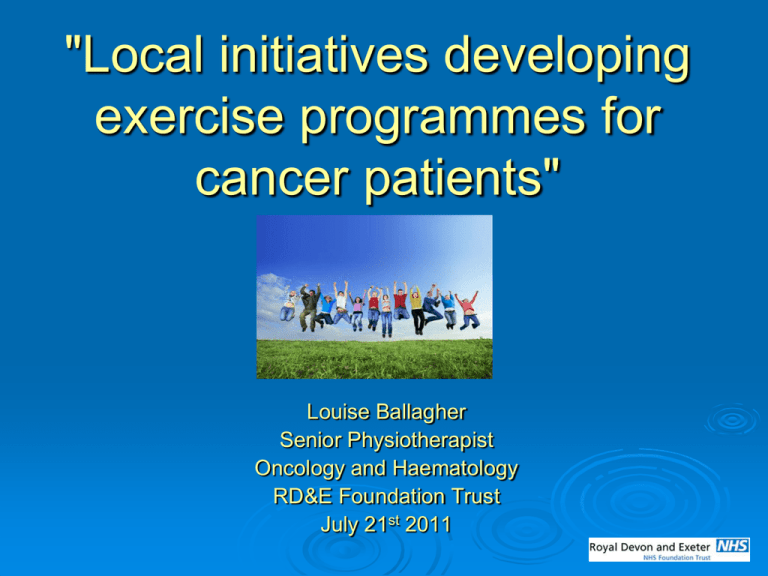
"Local initiatives developing exercise programmes for cancer patients" Louise Ballagher Senior Physiotherapist Oncology and Haematology RD&E Foundation Trust July 21st 2011 Aims To establish exercise programmes for patients receiving treatment for cancer Jones & Courneya 2002 To review the use of a Physiotherapy Technical Instructor in the prescribing and monitoring of exercise programmes for Haematology patients in isolation Common Symptoms of cancer treatment Fatigue / decreased energy levels 70% Decreased muscle strength Decreased functional status Nausea Pain Body image problems Sleep disturbances Depression and anxiety 20-50% Positive effects of exercise Reduces stress on the heart and blood vessels Increases ability of heart and lungs to deliver oxygen efficiently to the working tissues Increases muscular strength and endurance Improves immune system Improves mood, body image and sleep patterns Improves quality of life both physically and emotionally Benefits of exercise for cancer patients “Evidence is accumulating that exercise is beneficial for cancer sufferers” Cancer Level of Evidence Strength of evidence Colon High Strong Rectal Medium No effect Breast High Moderate Lung Low Moderate Prostate Medium Equivocal Overall Medium Moderate Others Low Equivocal Research - Fatigue Speck et al (2010) Meta analysis – Concluded that physical activity significantly reduced fatigue post Rx. 14 studies- 93% positive, 50% statistically significant Dimeo et al (2008) 32 pts; 3 week programme of endurance training 25% in fatigue; 28% in exercise capacity Research Quality of Life Courneya et al (2005) studies concluded that exercise had significant positive effects on the QOL of cancer patients Nausea Lee et al (2008) Moderate aerobic exercise is related to less intense nausea Research Neutropenia / thrombocytopenia Dimeo et al (1997) RCT on bone marrow transplant patients undergoing high-dose chemotherapy Duration of neutropenia and thrombocytopenia was reduced in the exercise group Recurrence / survival Meyerhardt et al (2006) Cancer specific death was 60% lower in women who exercised 6 or more hours a week (walking at average pace) If there is one message from the evidence it is: Rest is NOT always best “STAY ACTIVE” What has been happening at the RD&E ! Problems facing haematology patients Intensive and lengthy chemotherapy regimes, often HSCT. Frequent hospital admissions often in isolation Side effects of Rx De-conditioning Reduced QOL Low morale / low motivation RD&E Haematology Unit Past Present The Wii! “ There is growing evidence of the benefits of the Wii, and physiotherapists are looking into outcomes with their patients. There is definitely evidence that they are of benefit” Professional Adviser Chartered Society of Physiotherapy 2008 The introduction of the Wii ELF donation Wii sport and Wii fit Study Jan 09- July 09 Patient Satisfaction Survey Initial assessment Goal setting Exercise diary Follow up questionnaire Guidelines The Results Wii Study 2009 Initial Assessment Type of exercise % of patients No exercise 40 % Bed exercises 15% Seated exercises Static bike 31% Resistance exercise 0% 15% Mood Start Patients Follow up Patients 3 2.5 2 Patients 1.5 1 0.5 0 1 2 3 4 5 6 7 8 9 1=Very Happy 10=Very Depressed 10 Motivation Start Patients Follow up Patients 5 4 3 2 1 0 1 2 3 4 5 6 7 8 9 10 1=Very Motivate 10=V.De-motivated Physical Activity Start Patients Follow up Patients 4 3 2 1 0 1 2 3 4 5 6 7 8 9 10 1=Very Active 10=Very Inactive Results 85% study reported average of 30 mins accumulated exercise Positive feedback ! Difficulties! Access to equipment Staffing Availability of staff Increased referrals What happened next! • Proposal for funding of Physiotherapy Technical instructor post • 6 month pilot agreed 8 Hrs/week Evaluation of Pilot Patients identified by MDT New diagnosis, new physio referral Questionnaire completed. “Was it useful having a Technical Instructor monitor your exercise programme?” 100 80 60 40 20 0 Yes No Results 100 80 60 40 20 0 Mood Motivation Energy Levels Physical Activity Overall Well Being How would you rate the improvement ? 10 Mood 8 Motivation 6 4 2 0 Energy Levels Physical levels Overall Well Being ‘Are there any other comments you would like to make?’ “Feel good factor and gets you motivated to push yourself” “Without technical instructor I wouldn’t have been able to do it ! “Great motivation by a smiley instructor ! ” “Exercises to suit personal needs” “An excellent programme” “This should be regarded as an essential service What is going well ? “ The Way Forward ” Group Advice and information Leaflets Out-patients/ Daycare unit Cancer Rehabilitation Programmes Campbell 2007 Many Thanks to ELF • • Permanent Technical Instructor Post Increased to 12 hrs/week Cancer Rehabilitation Programmes Pilot agreed ! Two 8 week programmes The programme format : Pre assessment / screening Exercise programme – warm-up, aerobics, relaxation/cool down Educational component One meeting to take place at Fitness First Leisure Centre The Future More Promotion of Information Fly fishing / Dragon Boat racing! More Research More Hannahs ! Any Questions? References Campbell, A. (2007) Exercise after cancer diagnosis. Available at: www.canrehab.co.uk Courneya, K. (2005) Exercise can improve breast cancer survival. CA: A Cancer Journal for Clinicians 55:5: 265-266 Dimeo, F., Bertz, H., Finke, S., Mertlesmann, R., Keul, J. (1996) An Aerobic Exercise Programme for patients with haematological malignancies after bone marrow Transplant. Bone Marrow Transplant, 18:1157-60 Jones, L and Courneya, K. (2002) Exercise discussions during cancer treatment consultations. Cancer Practice 10(2):66-74 Lee, J., Dodd, S., Dibbles, D., Abrams, D. (2008) Nausea at the end of adjuvant cancer treatment in relation to exercise during treatment in patients with breast cancer. Oncology Nursing Forum 35(5): 830-835 Meyerhardt, J., Giovannucci, E., Holmes, M. (2006) Physical activity and survival after colorectal cancer diagnosis. Journal of Clinical Oncology 24(22): 3527-3534 Winningham, M. (1992) The Role of Exercise in Cancer Therapy. In: Watson, R., Eisinger, M. (eds) Exercise and Disease. Boca Raton: CRC Press
